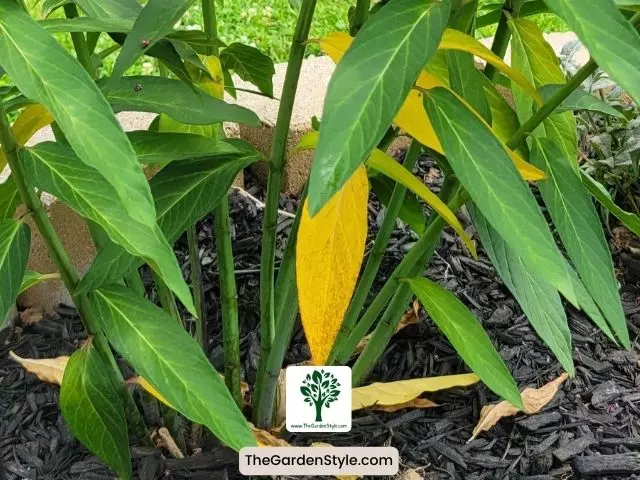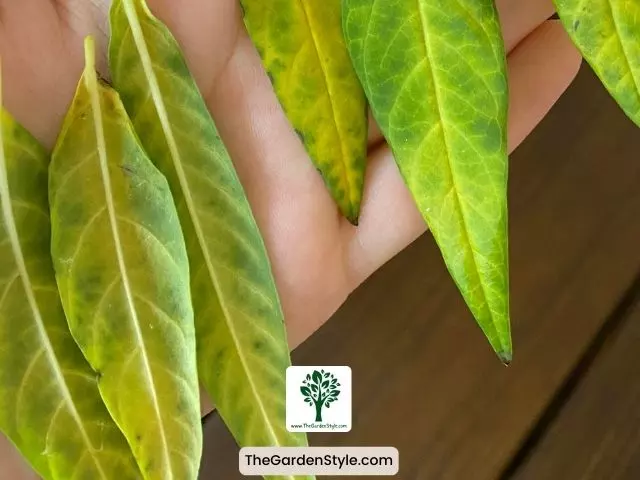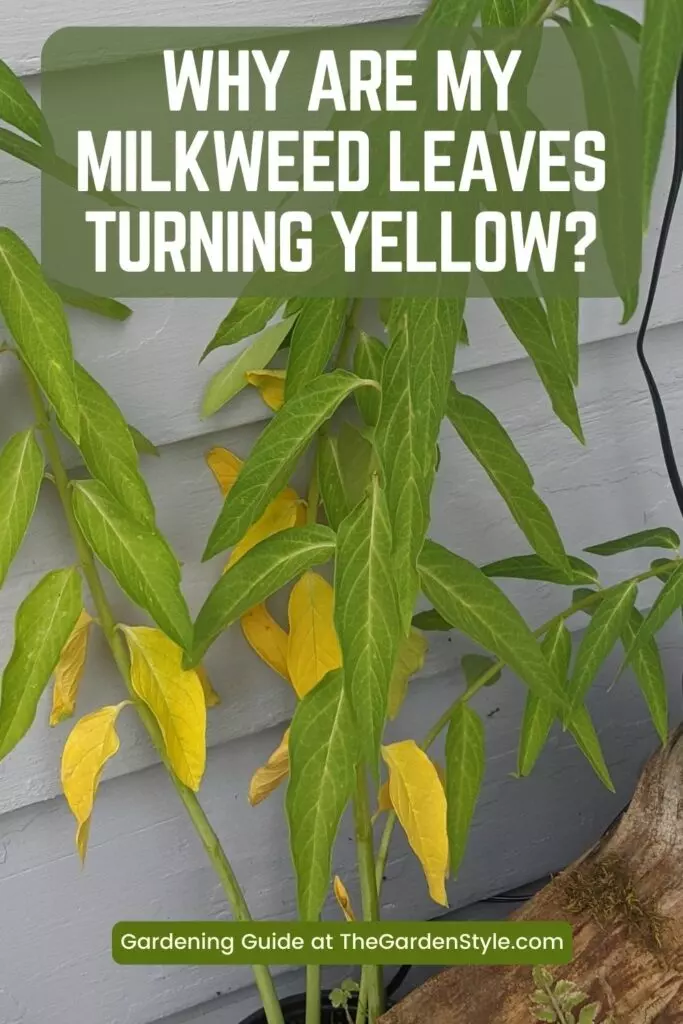I have seen many milkweed plants with yellowing leaves. This is a common problem that many gardeners and nature lovers face. In this article, I will discuss the reasons behind milkweed leaves turning yellow and how to fix it.
Yellowing of milkweed leaves can be caused by various factors such as pests, diseases, environmental conditions, and nutrient deficiencies. It is important to identify the underlying cause of yellowing to prevent further damage to the plant.
Table of Contents
Why Are My Milkweed Leaves Turning Yellow?
Milkweed is an essential plant for monarch butterflies, serving as the caterpillar’s only food source. However, milkweed can be tricky to grow well in home gardens. One of the most common issues gardeners run into is yellowing leaves, which can have detrimental effects on the plant. Here are some of the common causes of yellowing leaves on milkweed plants:
- Not Enough Water
- Poor Drainage
- Nutrient Deficiencies
- Pests or Diseases
- Environmental Stressors
The good news is that there are solutions for each cause, whether it simply involves adjusting your care routine or taking steps to remove damaging insects and diseases. With the right troubleshooting and treatments, your milkweed stand can recover and continue to thrive as an essential monarch habitat.

Not Enough Water
Milkweeds demand a consistent supply of moisture, particularly when first planted or when seedlings are still small, establishing themselves. Without sufficient water, the plants struggle to transport nutrients and undergo photosynthesis. This metabolic stress then leads to the leaves yellowing and drying out.
Suppose you notice the lower leaves yellowing first or the soil extremely dry around the milkweed roots. In that case, even just an inch down, underwatering is likely the culprit. The plants may start to droop or take on a somewhat dried-out, wispy appearance as the water deficiency takes its toll.
There are two simple ways to remedy moisture-starved milkweeds with yellow leaves:
- Water 1-2 times per week, providing about 1-2 inches of water each time. This is especially crucial during hot, dry stretches in summer.
- Spread 2-3 inches of organic mulch around the milkweeds. This helps lock in soil moisture and reduces surface evaporation.
Poor Drainage
While milkweed needs regular water, it does not tolerate soggy soil or standing puddles around its roots. Too much moisture suffocates the roots and encourages fungal infections like root rot to take hold. This not only damages the root system directly but also impedes the uptake of important nutrients from fertilizers or the soil.
Signs your yellowing milkweed suffers from overwatering include:
- Leaves yellowing from the bottom up
- Mushy stems or roots
- Foul odor from the soil
- Presence of mushrooms or fungal growths
There are a couple of effective solutions to provide better drainage for waterlogged milkweeds:
- Amend the soil with several inches of new compost or well-draining material like perlite before replanting. This creates a loosened soil texture that drains excess water.
- Grow milkweeds in raised garden beds, which sit above ground level. The extra space underneath allows filtration so water can readily drain away after heavy rains or irrigation sessions.

Nutrient Deficiencies
Milkweeds thrive when given plenty of food, as they are exceptionally heavy feeders. Without adequate macros and micros, plants become nutrient deficient, impeding functions like protein and chlorophyll production. When a deficiency of key nutrients occurs, characteristic yellowish patterns appear on the leaves.
Unlike the uniform yellowing of under and overwatering issues, you’ll notice interveinal chlorosis with nutrient deficiencies – yellowing between the darker green leaf veins. This results from the breakdown of chlorophyll that causes the overall yellow hue. Milkweed most commonly shows hunger signs for nitrogen, iron, manganese, and zinc. Learn more about nutrient deficiency in plants.
To remedy a nutrient-starved milkweed with yellowing leaves:
- Fertilize monthly with a balanced 10-10-10 organic fertilizer to provide key macronutrients like nitrogen, phosphorus, and potassium.
- Alternate between chelated iron or other micronutrients to make sure you have all bases covered.
- Top-dress around milkweeds with aged compost or worm castings.

Pests or Diseases
Yellowing milkweed leaves have nothing to do with improper care or environmental factors – the culprits are living pests and diseases! Several insects target milkweed as a food source, while milkweed yellows virus can also cause widespread yellowing.
Scan the undersides of discolored leaves closely for the presence of tiny sap-sucking aphids or other insects that damage plant tissues. Check stems and leaves for tiny brown bumps indicating milkweed bugs feeding on juices. Fuzziness on the undersides of leaves may signal spider mite infestations.
For viral culprits like milkweed yellows, look for yellowing leaves spreading up the plant with leaf edges curling upward unnaturally. The only solution is to remove and destroy the infected plant safely.
For insect and mite feeding, remedies include:
- Pruning off heavily infested leaves and stems
- Using insecticidal soap to deter further feeding
- Encouraging natural predators like ladybugs to manage populations
With parasites removed, the remainder of the damaged plant can recover its strength and generate new healthy green foliage.

Environmental Stressors
Milkweeds exhibit yellowing leaves due to unavoidable environmental factors, including weather at both temperature extremes. Scorching from intense summer sun causes blotchy yellow spots, while early fall frosts turn tender tissue limp and yellow. Strong winds can also desiccate and dry out developing leaves.
While the resulting foliage damage may look severe, it is often a natural part of the milkweed growth cycle in certain climates. The plants evolved to handle periodic diebacks from heat, cold snaps, and windstorms.
- Provide shelter from harsh winds using fences, fabric row covers, or shrubs as breaks.
- Trim off severely damaged yellow leaves to conserve the plant’s energy rather than trying to nurse them back. This allows new leaves to be generated.
- Add winter mulch layers if frost tends to strike early in autumn.
With protection methods and proper pruning of crispy leaves, milkweeds can continue thriving through seasonal storms and swings. Learn more about how to protect plants from frost.

Monitoring and Maintenance
I keep a close eye on my plants to ensure they remain healthy. Monitoring the leaves is an essential part of maintaining a healthy milkweed plant. When the leaves start to turn yellow, it is a sign that something is not right.
To maintain the health of your milkweed plant, you must perform routine maintenance. This includes checking for pests, watering, fertilizing, and pruning. Routine maintenance helps to prevent yellowing leaves and other issues.
One way to monitor the health of your milkweed plant is by keeping a journal. Record the date, weather conditions, and any changes you notice in the plant’s leaves. This will help you identify patterns and potential issues.
Another way to monitor your milkweed plant is by inspecting the leaves regularly. Check for any discoloration, spots, or holes. If you notice any issues, take action immediately to prevent them from spreading.
If this post about milkweed leaves turning yellow was helpful, please share it:



